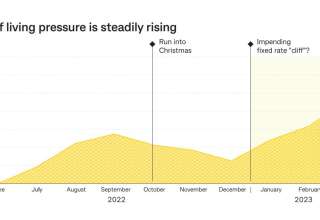by Richard Stone
While the federal government in Canberra makes minor amendments and deals with opposition to their Closing the Loopholes Bill, some reports emerging about the changing composition of the Australian workforce have not raised concerns from the business-classes.
In fact, the business-classes have remained totally quiet about the massive growth of temporary work visas, which hinder security of longer-term, viable employment and permanent residency leading to citizenship status.
It provides evidence of a business-class agenda marked by attack on basic Award terms and conditions of employment being largely unaccountable, a plan designed to ensure many workers remain employed, indefinitely, on the vulnerable basis at the whim of their employers.
Criticism of the Closing the Loopholes Bill, passing through Canberra, has been the rallying cry of the Australian business-classes. Some of the complaints have been particularly revealing; while casualisation remains a huge problem, the political line of the business-classes is that it remains a matter of choice and the 25 per cent paid over the standard wage is a fair outcome for not having sick leave, annual leave and other entitlements; a position symptomatic of industrial relations conducted on level-playing fields with economic trickle-down wealth rubbish. (1) The business lobby, in conjunction with the Opposition in Canberra, have, nevertheless, launched a multi-million dollar campaign to challenge the legislation.
It is not particularly difficult to establish why the business-classes remain so agitated about the Bill; an official statement from Canberra, for example, has accused opposition to Labor’s proposed legislation as ‘being solely motivated by a desire to keep wages low’. (2) Decades of economic rationalism and exploitation of workers has created huge profits which have not ‘trickled down’, but, to the contrary, enriched the already wealthy and powerful business lobby; they are now, therefore, squealing like stuck pigs, realising their game is up!
For 2.7 million Australian workers employed as casual workers, for example, opposition to the legislation completely overlooks the fact they remain on minimal credit ratings due to no security of employment and, therefore, remain on the economic fringes of mainstream Australian society, subsisting on the day-by-day basis with little opportunity for longer-term financial planning and enhanced outcomes. Mortgages and car loans are a major problem. Many have also been long-term casual workers for years, seemingly, almost forgotten.
Casual workers tend to be difficult for trade unions to recruit and organise, for a variety of reasons. The temporary nature of their employment creates conditions whereby longer-term planning for improved terms and conditions of employment take lower priority over receiving their pay every week. Immigrants arriving in Australia from some countries may also be cautious about joining a union in fear of retaliation from employers; in countries such as the Philippines and India, two large immigrant groups in Australia, trade union activists are often targeted by far-right para-military organisations and killed.
Official statistics reveal Australia has a total workforce of those aged between 18 and 67 years, of 14,115,100; a participation rate of about 66 per cent, however, leaves only 9,428,886 million. (3) In reality the true figure is likely to be far lower, with those of working age not officially registered as unemployed or elsewhere. When comparing the small size of the Australian workforce with the estimated $3.3 billion Super theft by employers each year, it is not difficult, however, to establish what the business-classes regard as ethical best practice. (4)
When broken down into component parts, the Australian workforce would also appear to have changed in composition in recent years. While the country has always been dependent upon immigration for a reliable workforce, in recent years there has been a dramatic increase in temporary work visas. The latest official statistics reveal nearly 2.3 million workers live in Australia without permanent residency. (5)
Many of those residing in Australia on temporary work visas also never access permanent residency for a variety of reasons: better prospects elsewhere, high rents, problems with employers, bureaucracy. In fact, during the past financial year, for example, those on temporary work visas rose 424,000, ‘more than twice the number of enduring settlers’. (6)
The Australian economy has also been noted as stagnating during the three months to June, with at least one in eight mortgage-holders now, ‘unable to make ends meet … and … Australians may have been working harder and longer to maintain a reasonable standard of living as the cost of living soared’. (7) Those casually employed, together with those on temporary visas, must find living in Australia, at the present time, financially very difficult.
It is also significant to note a substantial proportion of those on temporary visas do not necessarily enter the Australian workforce as skilled workers, revealing shortages of labour in those areas of unskilled and semi-skilled employment. In fact, in the 2020-21 year, when the permanent program accepted 160,000 new immigrant workers, only half were in the skilled sector; later in the 2022-23 year, only 73 per cent were skilled. (8) Unskilled and semi-skilled workers are usually paid basic Award rates of pay or slightly above on workplace agreements, while skilled workers and trades-people receive far more.
The early experiences of immigrant workers in Australia often include rampant wage theft, as they are not aware of their rights and the obligations of employers. (9) A recent study conducted by Unions NSW and the Migrant Workers Centre found more than one-fifth of immigrant workers were paid less than other workers for the same job and 19 per cent ‘lost an opportunity for promotion at work because of their visa status’. (10) So much for a fair go. A similar study conducted by the ACTU in May also established the hourly pay rate between casual workers and those permanently employed had risen to 28 per cent; casual workers earned $11.59 less an hour than their permanent work colleagues. (11)
When added together, 2.7 million casual workers and 2.3 million workers on temporary visas comprise a substantial proportion of the Australian work-force, although there may be some overlap. The former, however, have been targeted by the business-classes for special attention, to undermine government planning for permanent employment provision and increased wage rates, whilst the latter have been subject to silence as they are being systematically used to undermine Award wage rates, and terms and conditions of employment.
The problem, nevertheless, has already been highlighted by a top bureaucrat in Canberra, Martin Parkinson, who detailed how, ‘what we’ve done without ever setting out to do it … is we’ve created a guest worker program with a permanent underclass of people who are temporary migrants … they have no pathways to permanency, they have no idea what their status is, but we also don’t force them to leave’. (12) So there!
The silence of the business-classes over the matter is, therefore, revealing!
They have 2.3 million workers who live in fear of losing their employment as they are not entitled to welfare benefits and, therefore, remain in Australia for their livelihoods at the whim of their employers. The master-and-servant type relationship has been pushed by employers to undermine basic Award terms and conditions of employment and standard industrial relations. Those on the receiving end of this standard business practice continue to suffer, in silence. It is a total disgrace!
What is urgently required is for more stringent policing of the powers of the business classes
by trade union delegates and officials, by allowing open access to financial records and incriminating information, and for the judiciary to then act in the appropriate manner and secure criminal convictions!
1. See: Casuals still in danger under Labor’s blue-print. Australian, 2 November 2023; and, Survival of the richest, Oxfam publication, 2020.
2. Pub giant toasts changes for casual workers, The Weekend Australian, 4-5 November 2023.
3. Labour Force, Australia, Australian Bureau of Statistics, 19 October 2023.
4. Pub giant, Weekend Australian, op.cit., 4-5 November 2023.
5. See: Migration reboot to target skilled talent, Australian, 30 October 2023.
6. Ibid.
7. Flat-out working but going nowhere, Australian, 11 October 2023.
8. Migration reboot, Australian, op.cit., 30 October 2023.
9. See: New migrants the key victims of wage theft, Australian, 24 May 2023.
10. Pay rorts rife for migrant workers, Australian, 22 June 2023.
11. Casual pay gaps at record levels, Australian, 23 May 2023.
12. Migration reboot, Australian, op.cit., 30 October 2023.








